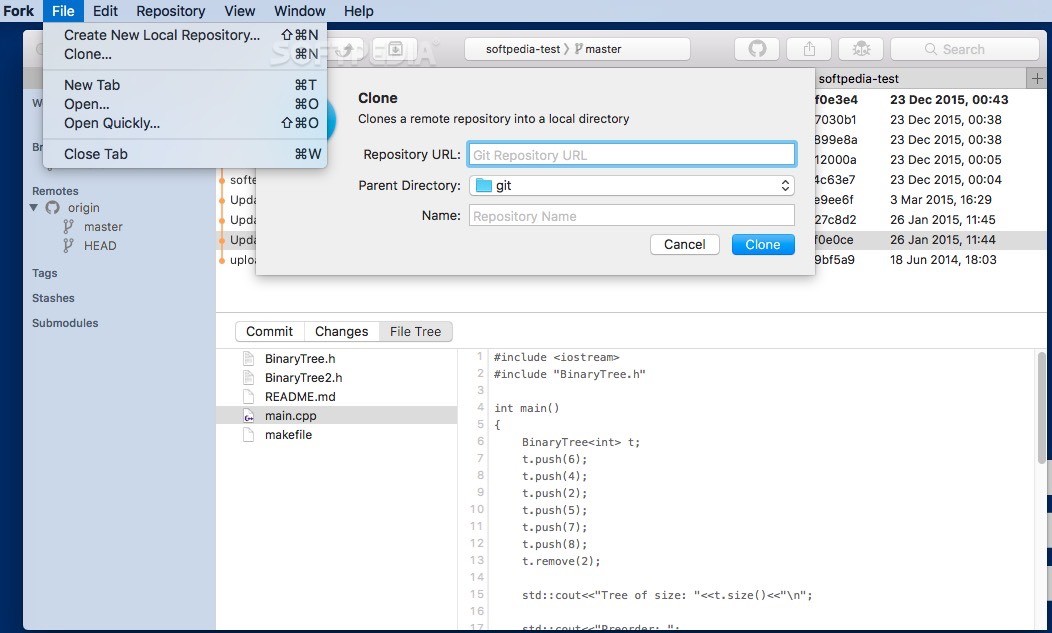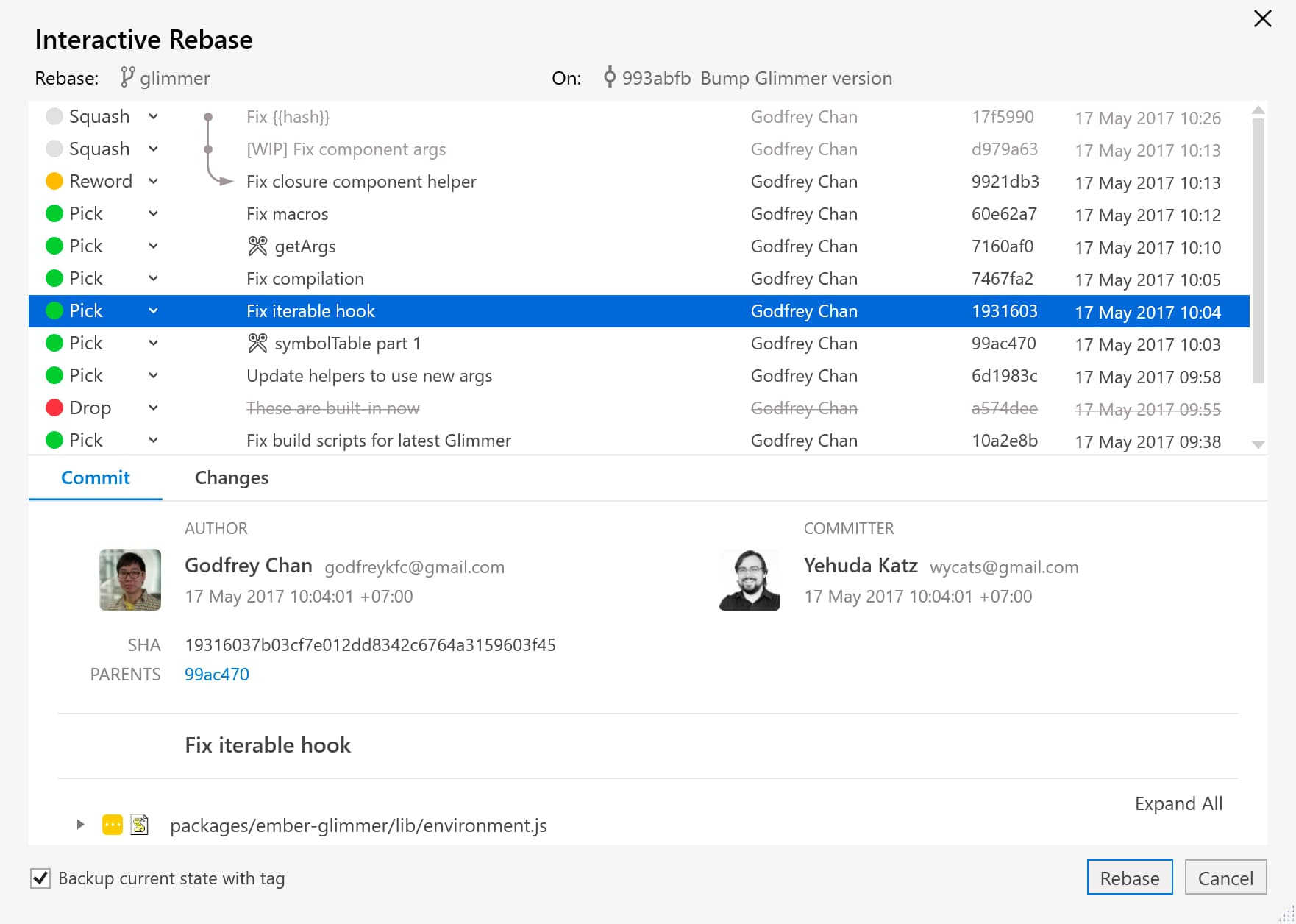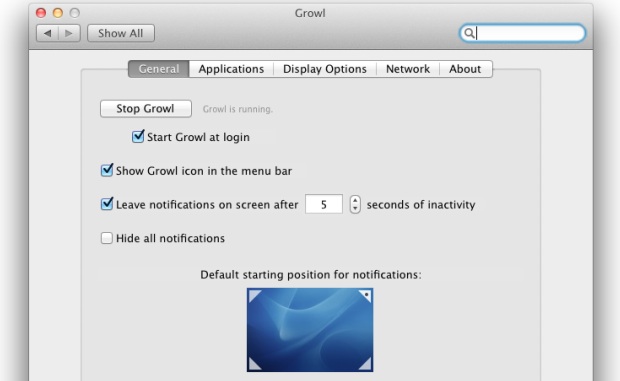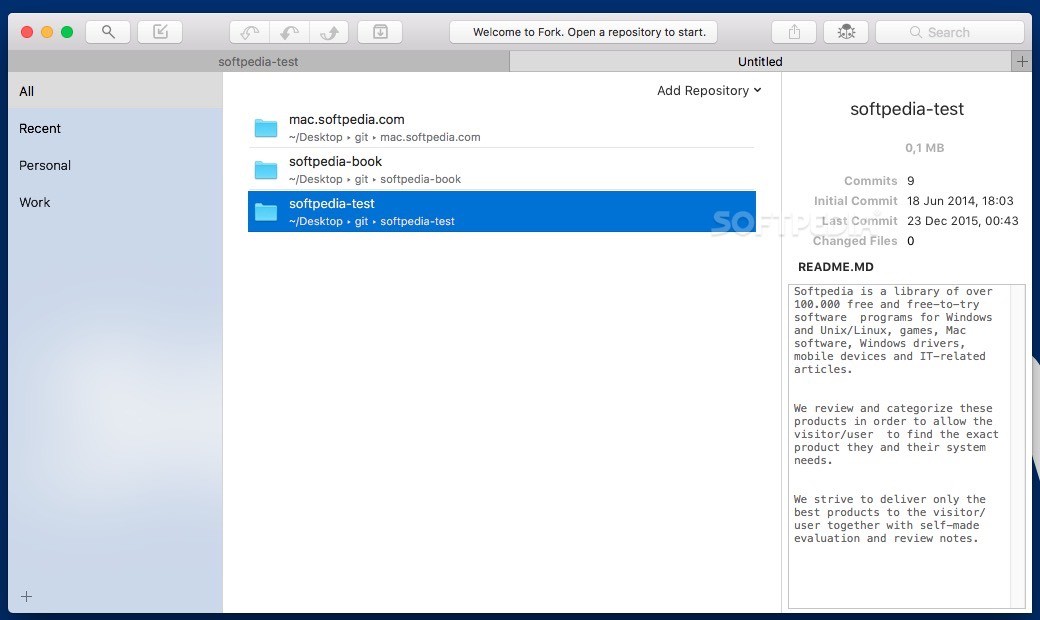The fork System Call. System call fork is used to create processes. It takes no arguments and returns a process ID. The purpose of fork is to create a new process, which becomes the child process of the caller. After a new child process is created, both processes will execute the next instruction following the fork system call. Therefore, we have to distinguish the parent from the child. Homepage for Meld macOS port. Meld is a visual diff and merge tool targeted at developers. Meld helps you compare files, directories, and version controlled projects. It provides two- and three-way comparison of both files and directories, and has support for many popular version control systems such as git, mercurial and others.
Home > Articles > Apple > Operating Systems
Adobe offers most of its programs for the price-tag as mentioned above, but a special Photography bundle exists, providing both Photoshop and Lightroom for only $10 a month. Adobe photoshop for mac pro. Even if you don't plan on using Lightroom, it still presents the best option for obtaining Photoshop.Alternatively, if you need more than a single app from Adobe's collection, you should consider the All Apps bundle which gives you access to Photoshop as well as every program Adobe currently offers for $40 a month; it's a semi-expensive option, but even subscribing monthly to two of the company's apps will surpass that price. Photoshop for students and teachersAre you currently a teacher or a student? You can for only $20 a month.
␡- The Layers of Mac OS X: Aqua

This chapter is from the book
This chapter is from the book
There is more than one way to think about dividing up a pizza. First, there is the familiar method of dividing it into slices. Alternatively, you could divide it into layers: topping, cheese, sauce, crust. Theoretically, you could also divide it into its basic ingredients: flour, water, tomatoes, garlic, milk. Each method makes a different contribution to your enjoyment of the pizza. The first method (slices) is best when you're getting ready to eat the pizza; the second is best when you are deciding what to order (such as pepperoni with extra cheese); the third is best if you are concerned about nutrition (needing to know the exact ingredients to calculate calories).
The same is true for Mac OS X. There are multiple ways to look at it and take it apart. Each way makes its own contribution to your understanding of the OS. In this chapter, I look at the major ways to 'take apart' Mac OS X. Having at least a minimal knowledge of Mac OS 9 will help, as I occasionally make comparisons between the two OS versions. But even if you've never used Mac OS 9, you'll be able to follow along.
In This Chapter
The Layers of Mac OS X: Aqua
The Layers of Mac OS X: Application Environments
Cocoa
Carbon
Classic
Java
Putting it together
The Layers of Mac OS X: Graphics Services
Quartz
Multimedia: OpenGL and QuickTime
The Layers of Mac OS X: Darwin
Mach
BSD (Unix)
Domains: An Overview
System domain
Local domain
User domain
Network domain
The Libraries of Mac OS X: /System/Library
Core Services
CFMSupport
Extensions
Fonts
Frameworks
PreferencePanes
Printers
QuickTime
ScreenSavers
Services
Sounds
StartupItems
The Libraries of Mac OS X: /Library
Application Support
ColorSync
Contextual Menu Items
Desktop Pictures
Documentation
Fonts
Internet Plug-Ins
Modem Scripts
Preferences
Printers
Receipts
StartupItems
The Libraries of Mac OS X: Users/'Home'/Library
Application Support
Caches
Favorites
Font Collections
Fonts
Internet Search Sites
Keychains
Preference Panes
Preferences
Application-specific folders
Fonts in Mac OS X: Font Formats
TrueType fonts
PostScript fonts
OpenType fonts
Bitmap fonts
Identifying font formats
Fonts in Mac OS X: Working with Fonts
Font Panel window
Font smoothing and Mac OS X
International language support: basics
International language support: troubleshooting
Font utilities
The Layers of Mac OS X: Aqua


Aqua is the name given to what most users think of when they think of Mac OS X: the user interface, the Finder, the Dock, the windows, the translucent buttons, the high-resolution icons, the menus, and all the rest. Many users may never explore Mac OS X beyond its Aqua layer.
From this perspective, a user upgrading from Mac OS 9 will feel quite at home, at least initially. Much still works the same way. You still double-click icons in the Finder to launch them; you still choose the Save command from an application's File menu to save a document; you still open a folder icon to see its contents.
But you will soon notice some significant differences: a new column view, a very different Apple menu, the Dock. I discussed the basics in Chapter 3, when I presented an overview of Mac OS X.
Related Resources
- Book $55.99
- eBook (Watermarked) $55.99
- Web Edition $55.99
Meld for OSX
This is a fork of Meld packaged and bundled for OSX. The original website for Meld is here http://meldmerge.org. Minor work has been done to also integrate OSX menu and shortcuts, but the app is truly the original, excellent Meld.
Download OSX dmg file
You may download any of the following versions. The 3.21.0 (r2) is the latest and the recommended version at this point.
- Version 3.21.0 (r2) Latest (Catalina & Mojave)
- Version 3.19.2 (r5) (Mojave & High Sierra)
- Version 3.19.2 (r3) (Mojave & High Sierra)
- Version 3.19.0 (r1) (Previous stable version - High Sierra)
- Version 3.16.0 (r1) (Not for High Sierra)
- Version 3.15.4 (r2) (Not for High Sierra)
- Version 3.15.2 (r2) (Not for High Sierra)
- Version 3.13.4 (Not for High Sierra)
- Version 1.8 (Not for High Sierra)
Tip: A lot of people are asking how to use this package as a git difftool/mergetool.Once installed, edit your ~/.gitconfig and add the following lines
Tip:Meld OSX also understands/checks for the following environment variables.
The theme change can be done by changing the variable in the wrapper script
find the part that says
and change it to

This chapter is from the book
This chapter is from the book
There is more than one way to think about dividing up a pizza. First, there is the familiar method of dividing it into slices. Alternatively, you could divide it into layers: topping, cheese, sauce, crust. Theoretically, you could also divide it into its basic ingredients: flour, water, tomatoes, garlic, milk. Each method makes a different contribution to your enjoyment of the pizza. The first method (slices) is best when you're getting ready to eat the pizza; the second is best when you are deciding what to order (such as pepperoni with extra cheese); the third is best if you are concerned about nutrition (needing to know the exact ingredients to calculate calories).
The same is true for Mac OS X. There are multiple ways to look at it and take it apart. Each way makes its own contribution to your understanding of the OS. In this chapter, I look at the major ways to 'take apart' Mac OS X. Having at least a minimal knowledge of Mac OS 9 will help, as I occasionally make comparisons between the two OS versions. But even if you've never used Mac OS 9, you'll be able to follow along.
In This Chapter
The Layers of Mac OS X: Aqua
The Layers of Mac OS X: Application Environments
Cocoa
Carbon
Classic
Java
Putting it together
The Layers of Mac OS X: Graphics Services
Quartz
Multimedia: OpenGL and QuickTime
The Layers of Mac OS X: Darwin
Mach
BSD (Unix)
Domains: An Overview
System domain
Local domain
User domain
Network domain
The Libraries of Mac OS X: /System/Library
Core Services
CFMSupport
Extensions
Fonts
Frameworks
PreferencePanes
Printers
QuickTime
ScreenSavers
Services
Sounds
StartupItems
The Libraries of Mac OS X: /Library
Application Support
ColorSync
Contextual Menu Items
Desktop Pictures
Documentation
Fonts
Internet Plug-Ins
Modem Scripts
Preferences
Printers
Receipts
StartupItems
The Libraries of Mac OS X: Users/'Home'/Library
Application Support
Caches
Favorites
Font Collections
Fonts
Internet Search Sites
Keychains
Preference Panes
Preferences
Application-specific folders
Fonts in Mac OS X: Font Formats
TrueType fonts
PostScript fonts
OpenType fonts
Bitmap fonts
Identifying font formats
Fonts in Mac OS X: Working with Fonts
Font Panel window
Font smoothing and Mac OS X
International language support: basics
International language support: troubleshooting
Font utilities
The Layers of Mac OS X: Aqua
Aqua is the name given to what most users think of when they think of Mac OS X: the user interface, the Finder, the Dock, the windows, the translucent buttons, the high-resolution icons, the menus, and all the rest. Many users may never explore Mac OS X beyond its Aqua layer.
From this perspective, a user upgrading from Mac OS 9 will feel quite at home, at least initially. Much still works the same way. You still double-click icons in the Finder to launch them; you still choose the Save command from an application's File menu to save a document; you still open a folder icon to see its contents.
But you will soon notice some significant differences: a new column view, a very different Apple menu, the Dock. I discussed the basics in Chapter 3, when I presented an overview of Mac OS X.
Related Resources
- Book $55.99
- eBook (Watermarked) $55.99
- Web Edition $55.99
Meld for OSX
This is a fork of Meld packaged and bundled for OSX. The original website for Meld is here http://meldmerge.org. Minor work has been done to also integrate OSX menu and shortcuts, but the app is truly the original, excellent Meld.
Download OSX dmg file
You may download any of the following versions. The 3.21.0 (r2) is the latest and the recommended version at this point.
- Version 3.21.0 (r2) Latest (Catalina & Mojave)
- Version 3.19.2 (r5) (Mojave & High Sierra)
- Version 3.19.2 (r3) (Mojave & High Sierra)
- Version 3.19.0 (r1) (Previous stable version - High Sierra)
- Version 3.16.0 (r1) (Not for High Sierra)
- Version 3.15.4 (r2) (Not for High Sierra)
- Version 3.15.2 (r2) (Not for High Sierra)
- Version 3.13.4 (Not for High Sierra)
- Version 1.8 (Not for High Sierra)
Tip: A lot of people are asking how to use this package as a git difftool/mergetool.Once installed, edit your ~/.gitconfig and add the following lines
Tip:Meld OSX also understands/checks for the following environment variables.
The theme change can be done by changing the variable in the wrapper script
find the part that says
and change it to
and you'll have a fully dark meld.
Why Meld for Mac/OSX and not Macports/Homebrew
Top reasons behind using this fork over Macports or Homebrew builds:
- Retina support (check the screenshot!)
- Latest 3.x series
- No hassle install (drag/drop like any other app)
- Integrates with OSX menu
Supports standard OSX shortcuts (cmd-c/cmd-v instead of ctrl)(Merged to upstream)- Note: Homebrew now installs Meld for OSX
Screenshot
Special Thanks
- To Kai Willadsen http://meldmerge.org/ for creating Meld.
- To the Gnome project https://www.gnome.org/
- To Alex Kras whose web page (How To Run Meld on Mac OS X Yosemite Without Homebrew, MacPorts, or Think) served as my reference for tracking Meld for OSX usage and issues when I had absolutely no time to maintain this.
TODO
- Get rid of the Meld wrapper shell script (this should get rid of all the wrappers needed to run Meld from the terminal)
- Support Meld localizations (currently only English works)
Suggestions / Issues
If you have a suggestion or you are facing an issue running this Meld fork, please open an issue here https://github.com/yousseb/meld/issues. Please note that your issue has to be specific to the OSX fork and not to Meld itself. I have no plans/time to work on Meld itself.
Contribute to Meld for OSX
- Head to https://github.com/yousseb/meld
- Fork the repository and clone your fork locally.
- Follow the build instructions in https://github.com/yousseb/meld/blob/master/osx/README.md to generate your own dmg.
- Do your magic, commit and push to your fork.
- Create a pull request.
Not Accepting Donations
I'm not currently accepting donations for the development of this fork. I just missed a proper implementation of Meld on Mac so I thought of creating this fork. If you want to donate, please donate to the original Meld project.
The following is copied from the original Meld page http://meldmerge.org/. Please visit the original project website for more info. For the full help manual, please visit http://meldmerge.org/help/.
What is Meld?
Meld is a visual diff and merge tool targeted at developers. Meld helps you compare files, directories, and version controlled projects. It provides two- and three-way comparison of both files and directories, and has support for many popular version control systems.
Meld helps you review code changes and understand patches. It might even help you to figure out what is going on in that merge you keep avoiding.
Features
- Two- and three-way comparison of files and directories
- File comparisons update as you type
- Auto-merge mode and actions on change blocks help make merges easier
- Visualisations make it easier to compare your files
- Supports Git, Bazaar, Mercurial, Subversion, etc.
- …and more
Fork For Mac Os 10.10
Meld is licensed under the GPL v2, except as noted
In depth features
File comparison
- Edit files in-place, and your comparison updates on-the-fly
- Perform two- and three-way diffs and merges
- Easily navigate between differences and conflicts
- Visualise global and local differences with insertions, changes and conflicts marked
- Use the built-in regex text filtering to ignore uninteresting differences
- Syntax highlighting
Fork Bomb Mac Os
Directory comparison
- Compare two or three directories file-by-file, showing new, missing, and altered files
- Directly open file comparisons of any conflicting or differing files
- Filter out files or directories to avoid seeing spurious differences
- Simple file management is also available
Version control
Fork For Mac Os High Sierra
- Meld supports many version control systems, including Git, Mercurial, Bazaar and SVN
- Launch file comparisons to check what changes were made, before you commit
- View file versioning statuses
- Simple version control actions are also available (i.e., commit/update/add/remove/delete files)
Merge mode (in development)
Fork For Mac Os 10.13
- Automatically merge two files using a common ancestor
- Mark and display the base version of all conflicting changes in the middle pane
- Visualise and merge independent modifications of the same file
- Lock down read-only merge bases to avoid mistakes
- Command line interface for easy integration with existing tools, including git mergetool
